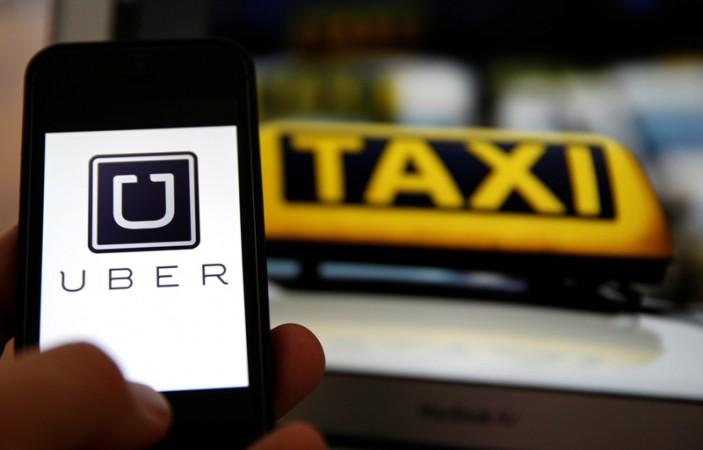Taxi service provider Uber has been banned in New Delhi following the rape of a 25-year-old by one of its drivers.
Allegations that the apprehended driver is a repeat sexual offender and the company failed to complete the mandatory verification process have landed the California-based company in troubled waters and raised questions about safety and regulations of privately run cab operators.
The start-up, valued at $48billion, is a mobile app-based operation using the shared rides model. It provides for a cashless transaction, once the app is installed to a phone and the credit card details are entered.
Uber, currently offers two services, uberX, a low-cost fleet made of hatchbacks and entry level sedans and UberBlack, constituting 'C' and 'D' category sedans.
Using GPS positioning, the company maps the consumer to the closest available cab and informs the driver.
In India, Uber is using the conventional app route and is not yet offering ride-sharing.
A burgeoning 'middle class' with disposable incomes to burn is indulging in more outings. The perennially clogged roads and the inordinate amount of time it takes to find parking space has seen many going in for more viable and economical options like the new taxi services now crowding the Indian market place.
The organized cab sector comprises a paltry 5% of the overall market. It has a few players whose services are now priced at par with autorickshaws and are comparatively lesser than the owner-operator/small scale taxi providers.
This has led to complaints from the unionized for-hire driver fraternity, who are unable to compete with the deep pocketed players. The members of the unions make up a considerable size of the vote-bank, something political parties cannot choose to ignore.
The present case complicates matters for organized players like Meru and others, who claim that they vet the drivers running a fleet of cabs running into thousands. However, taxi-aggregators like TaxiForSure and OLA have small and individual players in their fleet and run on the radio cab mode. It is unclear if they too have a stringent verification process for drivers.
Radio cabs are equipped with a two-way radio, where the cab's whereabouts are always tracked by a controller in the call centre office, which handles cab requests through phone ins. The fleet management is on a larger scale and involves professional drivers and comfortable and clean vehicles.
How Safe Are These Rides?
India has a long history of poor treatment of women. The latest National Crime Records Bureau (NCRB) statistics show 93 women are raped in the country every day.
A few days prior, a 16-year-old rape survivor who became pregnant was asked to take Rs. 50,000 from the culprit and go for an abortion.
The country is still reeling from the inhuman rape and death of a young medical student named Nirbhaya by the media, two years ago.
The present case questions the very raison d'être behind seeking a ride with an established cab operator.
Transport Minister Nitin Gadgiri has indicated that the new laws being considered for traffic and roads are going to be stringent. However, the laws already in existence suffer from poor implementation.
The economic models of the players are under attack. It is important to balance profits and people together and not separately.
The safety features available in the cabs beg reconsideration. A partition between the driver and passenger; a decoupling of the central locking mechanism with rear-locking facility accessible only to the occupant in the rear, are measures that need to be mandatory. A boot release mechanism, from within, can also be considered.
The famous London cabs have their specifications based on the turning radius available at its famous Savoy Hotel. If a technical requirement demands such specifications, would not the importance of human life prompt the institution to come up with consumer-friendly modes?
It is time consumer forums and cab manufactures step forward to design and implement reforms and regulations that make the ride not only comfortable, but also safe.















